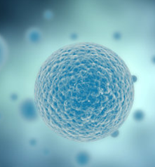IFIT Protein: Its Molecular Mechanism on Distinguishing Viral RNA only

IFIT protein, an anti-virus protein, allows the human immune system to detect viruses and prevent infection. It services as foot soldiers guarding the body against infection. It recognizes foreign viral ribonucleic acid (RNA) produced by the virus and acts as defender molecules by potentially latching onto the genome of the virus and preventing it from making copies of itself, blocking infection.
Researchers from CeMM of the Austrian Academy of Sciences have discovered the molecular blueprint behind the IFIT protein and the result was published on Jan. 13’s Nature. The findings are a promising step towards developing new drugs for combating a wide range of immune system diseases.
The study was led by Bhushan Nagar and Dr. Giulio Superti-Furga at the CeMM. On the basis of their previous study in 2011 CeMM that IFIT proteins unexpectedly interact directly with the viral RNA to inhibit its replication, their latest discovery reveals the molecular mechanism behind how IFIT proteins capture only the viral RNA and distinguishes it from normal molecules belonging to the host.
In order to replicate itself, once a virus enters a cell, it could generate foreign molecules such as RNA with three phosphate groups (triphosphate) exposed at one end. Triphosphorylated RNA is what distinguishes viral RNA from the RNA found in the human host. During the process, the receptors of the innate immune system are usually able to detect the foreign molecules from the virus and turn on signaling cascades in the cell that leads to the switching on of an antiviral program, both within the infected and nearby uninfected cells. Hundreds of different proteins are produced as part of this anti-viral program, which work in concert to resist the viral infection.
In the lab, researchers used X-ray crystallography to capture the IFIT protein directly in the act of recognizing the foreign RNA.
The researchers determined that IFIT proteins have evolved a specific binding pocket, chemically compatible and big enough to fit only the triphoshorylated end of the viral RNA. Human RNA is not able to tightly interact with this pocket, thereby circumventing autoimmune reactions.
The work shed light on the interaction between IFITs and RNAs. One of the researchers said, "Once the IFIT protein clamps down on the viral RNA, the RNA is then presumably prevented from being used by the virus for its own replication. Since many viruses, such as influenza and rabies, rely on triphosphate RNA for their lifecycle, these results have widespread implications in understanding how our cells interact with viruses and combat them."
Article Link: IFIT Protein: Its Molecular Mechanism on Distinguishing Viral RNA only


